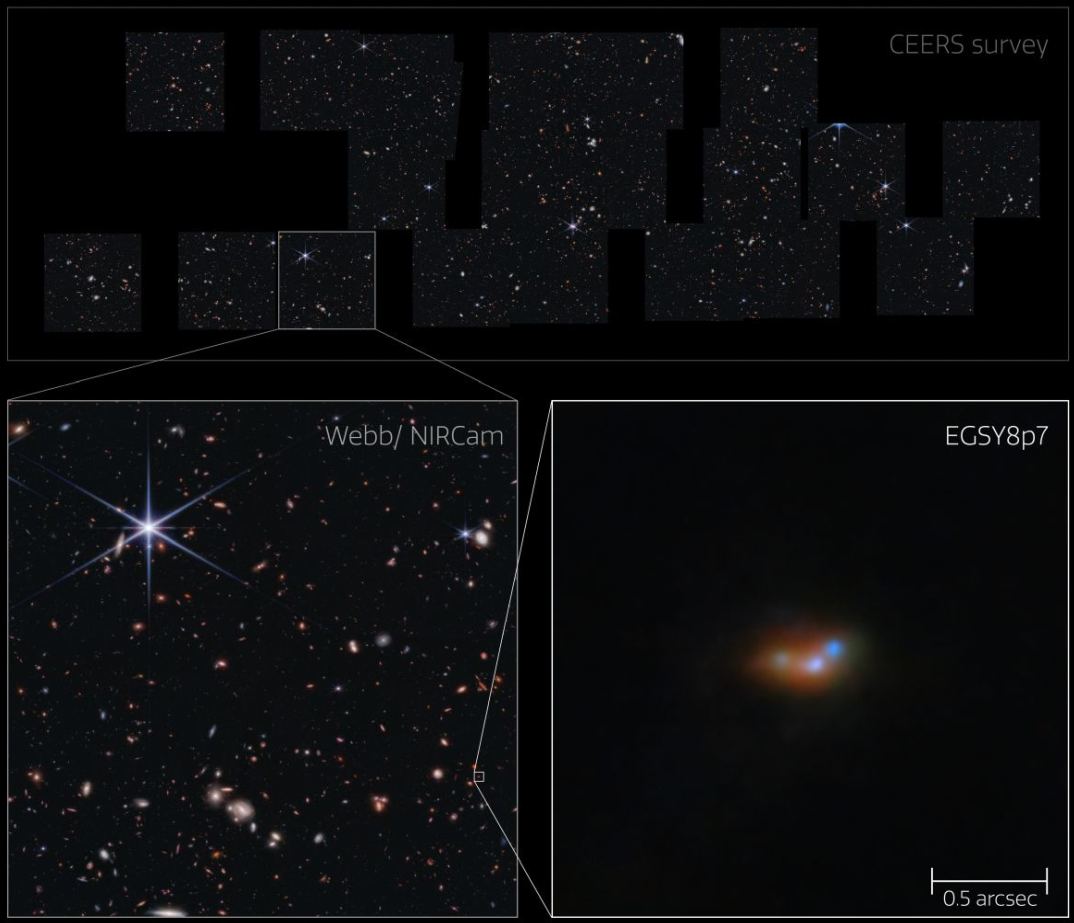At the initial stage of the universe, when it was still dark and filled with hydrogen, photons had not yet penetrated space. The universe lit up only after the birth of the first stars, which illuminated their environment with ultraviolet radiation. This period is known as the Epoch of Reionization.

Even before light penetrated the darkness, scientists discovered a mysterious kind of light – Lyman-alpha emission. Even under the dark conditions of the early universe, when light could not pass through an opaque gas, astronomers noticed some lines of this emission long before the Epoch of Reionization. Where they came from under such conditions remained unknown.
Lyman-alpha emission occurs in the ultraviolet range due to the transition of electrons of hydrogen atoms to a certain energy state. The Lyman-alpha spectral lines form the so-called Lyman-alpha forest, a series of deepened lines arising from hydrogen in distant astronomical objects. When this light passes through gas clouds with different redshifts, the forest of Lyman-alpha lines is formed.
The study “Deciphering Lyman-alpha emission deep into the epoch of reionization” published in Nature Astronomy, may solve this mystery. The author of the study is Callum Witten, a researcher at the Kavli Institute of Cosmology at the Kavli Institute for Cosmology at Cambridge University in the UK. The new study uses the unique capabilities of the JWST, designed to explore the early stages of the universe. The telescope can detect the light emitted by the stars of the first galaxies, which leads to a new understanding of the early universe.

The study has shown that all galaxies with Lyman-alpha emissions have close companions. This has become a key discovery. The JWST image of the galaxy LAE EGSY8p68 revealed details that were not seen by the Hubble telescope. The JWST resolution reveals groups of smaller galaxies around the bright LAE EGSY8p68 galaxies that were previously invisible. This indicates the presence of intense star formation in this region.
The results of the study indicate that the Lyman-alpha emission occurs as a result of the merger of galaxies and their intense star formation. A simulation of galaxy mergers called Azahar confirmed this idea. The merger of galaxies creates bubbles and channels of ionized hydrogen that transmit alpha emission, and form a path for it through the neutral gas of the early universe.
So, JWST allows us to look at the early stages of the universe, discover details previously unavailable, and reveal the secrets of the Lyman-alpha emission illuminating ancient galaxies.
According to universetoday.com
Follow us on Twitter to get the most interesting space news in time
https://twitter.com/ust_magazine


